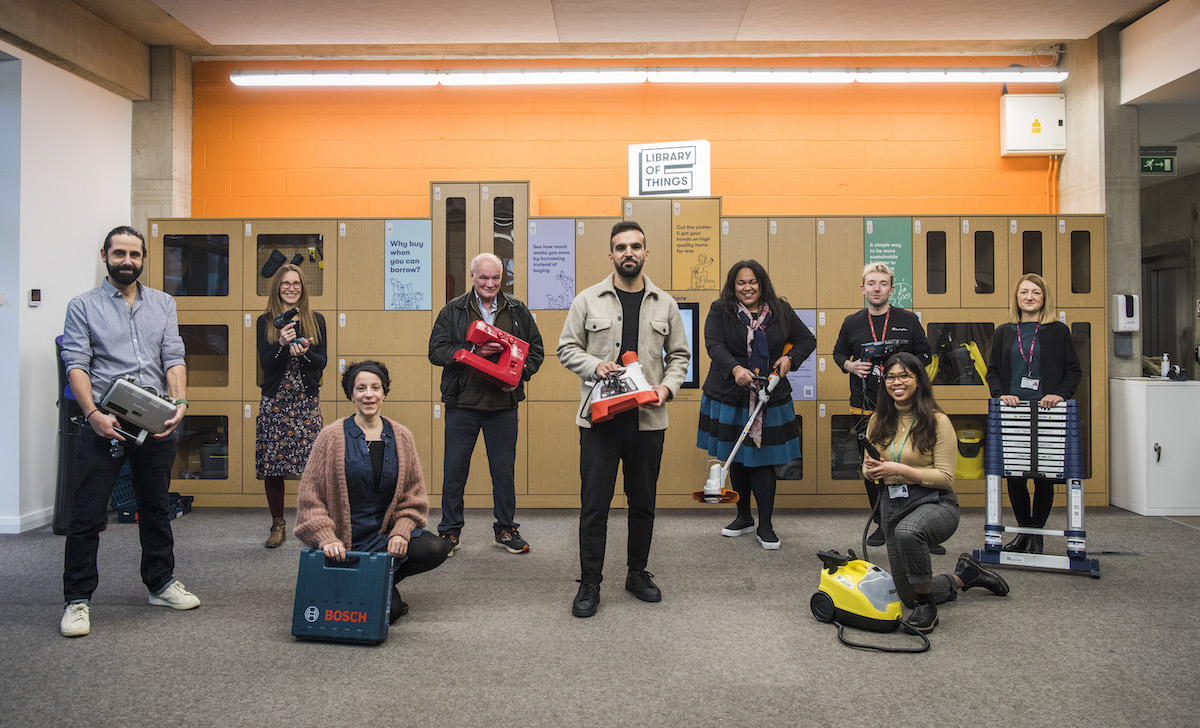A Library of Things allows people to borrow stuff that they only need now and then. Blending a grassroots movement with technology, hundreds more are in planning
Already, 5,000 Londoners are on to it: borrowing anything from sound systems to sewing machines from a catalogue of around 50 items. They are the pioneers of the Library of Things (LoT) model, which helps people to save money and reduce waste by affordably renting out household items. They’ve collectively saved around 50 tonnes of waste from landfill since it all began.
Following a successful crowdfunding bid to scale up from the existing seven neighbourhoods to 50 across England, the team at the women-led social enterprise are optimistic that those 5,000 borrowers will be the first of many. They raised almost £375,000 to expand, saying that the model is a valuable one, at a time when one in seven UK shops lie empty, and councils and communities are casting around for solutions.
“We see a Library of Things as an activator for the community hubs it inhabits – whether arts venues, libraries, or reuse and repair shops,” says co-founder Rebecca Trevalyan. “The service brings diverse footfall, income and impact – helping local people do projects affordably and learn practical skills, while reducing waste.”

Putting purpose ahead of profit, Library of Things services are currently housed within six other libraries, community venues and reuse shops across the capital, with another set to arrive next to Ikea in a Hammersmith shopping centre. Brand partners like Bosch and Kärcher provide the products at low – or no – cost, in exchange for insights into product usage and maintenance.
The model remains essentially the same since Trevalyan and co started testing the idea from shipping containers in south London in 2016: people can rent hedge-trimmers, carpet cleaners, drills, pressure washers and other items from as little as £1 a day. (Borrows usually work out at about 5 per cent of the cost of buying items new, the team says.)
But things have got smarter: they’ve now developed their own software and have integrated it with an off-the-shelf locker system, to ensure smoother borrowing and returning.

Users can rent pressure washers and other items from as little as £1 a day. Image: Library of Things
“Communities want hopeful alternatives to consumerism,” says Trevalyan, who notes that more than 400 councils and groups have expressed interest in setting up their own Libraries of Things.
Though funding for any new enterprises remains tight at the moment, they have found ways: Bromley council funded the launch of Bromley Library of Things through its Carbon Offset Fund, while nine other London councils have chosen to fund the enterprise to help tackle waste and emissions, and the rising cost of living.
“Our high streets need fresh ideas, and communities and councils are serious about coming together around hopeful climate and waste solutions,” says Trevalyan. “So now’s the time to make this happen in every neighbourhood that wants it.”
The concept in numbers
-
80
%The proportion of household items that are used less than once a month
-
2
ndThe UK is the 2nd largest contributor to electrical waste in the world
-
5,000
Number of people who have already borrowed from their local Library of Things
-
£
240,000Amount people have collectively saved using Library of Things (plus an estimated 50 tonnes of waste)
This article is the latest in our ‘reinventing the high street’ series. Over the coming weeks Positive News will be shining a light on the people, places and projects that are breathing new life into the UK’s town and city centres as many retail giants abandon them.
Main image: Library of Things
Credit: Source link



